As part of vSAN Stretched or 2-Node cluster configuration, a witness appliance should be deployed and configured. This witness appliance will host witness components that are being used in split-brain failure scenarios. The witness component will act as a tie-breaker and help vSAN cluster to satisfy the quorum requirements. The witness server could be installed as a dedicated physical ESXi host or a specialized virtual witness appliance can be used instead. The main reason for having witness as a virtual appliance is it does not require an extra vSphere license to consume and eventually save some cost especially for smaller implementation like ROBO. The other reason behind using a virtual appliance is for multi-cluster environments like VCF stretched cluster implementation. Due to the reason of each vSAN cluster needs its own witness, then you can consolidate all of them on one physical host on a third site.

vSAN Witness Size and Requirements
Depending on the size of the environment, witness appliance configuration size will be chosen upon the deployment process. vSAN witness appliance deployment options are hardcoded and there is no need to modify them. Following are three different configuration options that you can choose during the implementation process;
- Tiny – Supports up to 10 VMs/750 Witness Components
- 2 vCPUs
- 8GB vRAM
- 12GB ESXi Boot Disk
- 10GB Cache Device
- 15GB Capacity Device
- Medium – Supports up to 500 VMs/21,000 Witness Components
- 2 vCPUs
- 16GB vRAM
- 12GB ESXi Boot Disk
- 10GB Cache Device
- 350GB Capacity Device
- Large – Supports over 500 VMs/45,000 Witness Components
- 2 vCPUs
- 32 GB vRAM
- 12GB ESXi Boot Disk
- 10GB Cache Device
- 3x350GB Capacity Devices
First, you need to download Witness Appliance OVA file from here and go ahead and start the OVF Template deployment. On the first page select the downloaded file and click next.
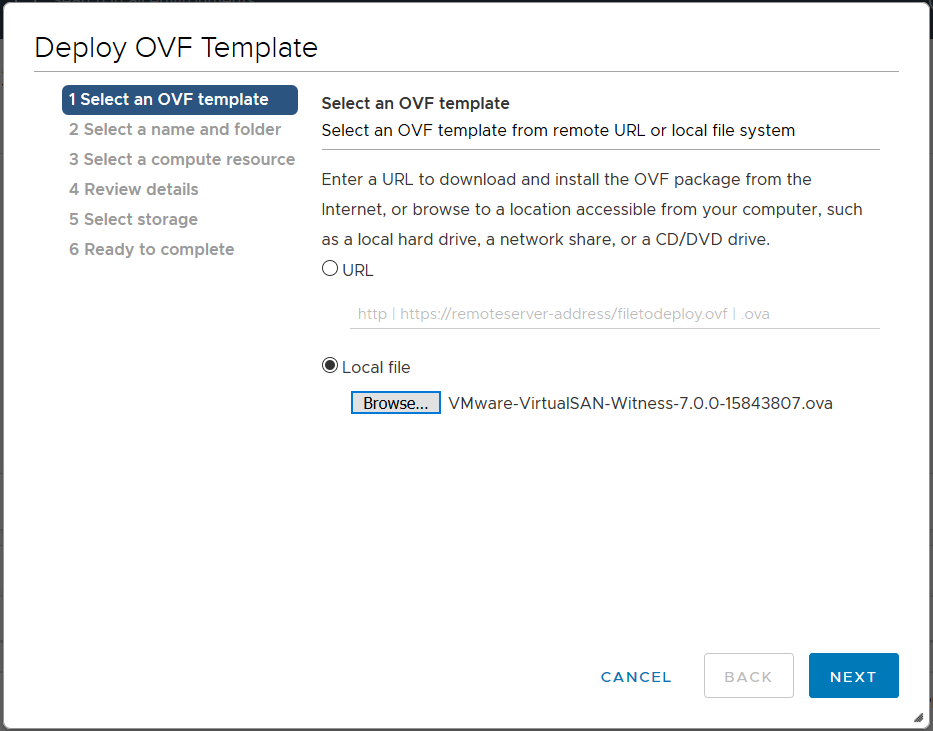
Name your witness appliance and select the VM location where you want to store the virtual appliance.
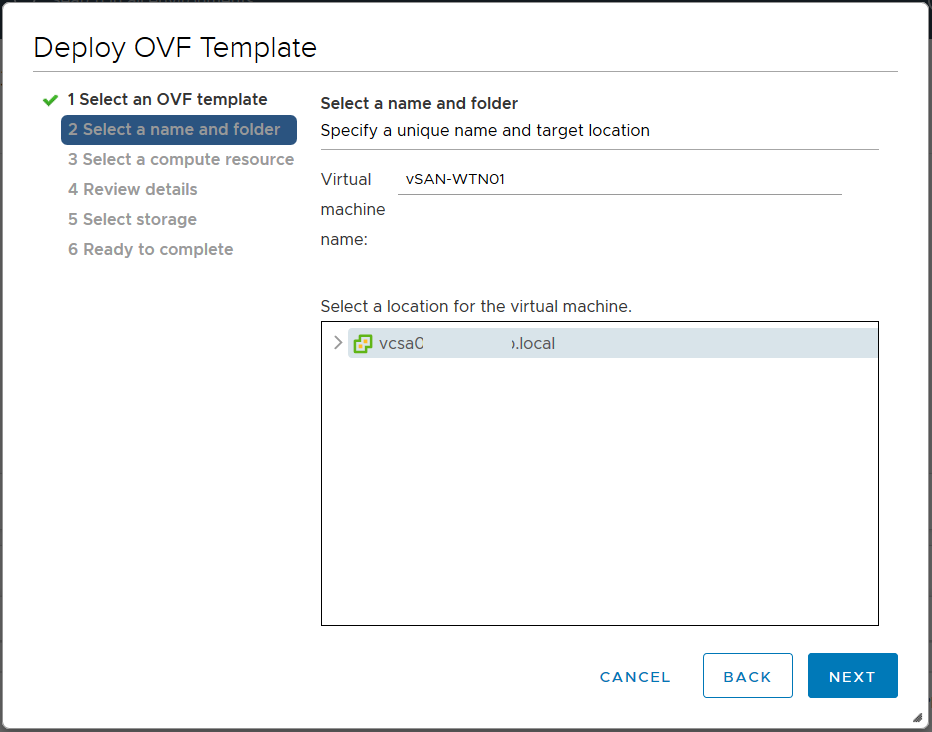
On the next page choose the cluster or ESXi host that you want to deploy the witness appliance on. On the next two pages of the wizard review the details and accept the End-User License Agreement.
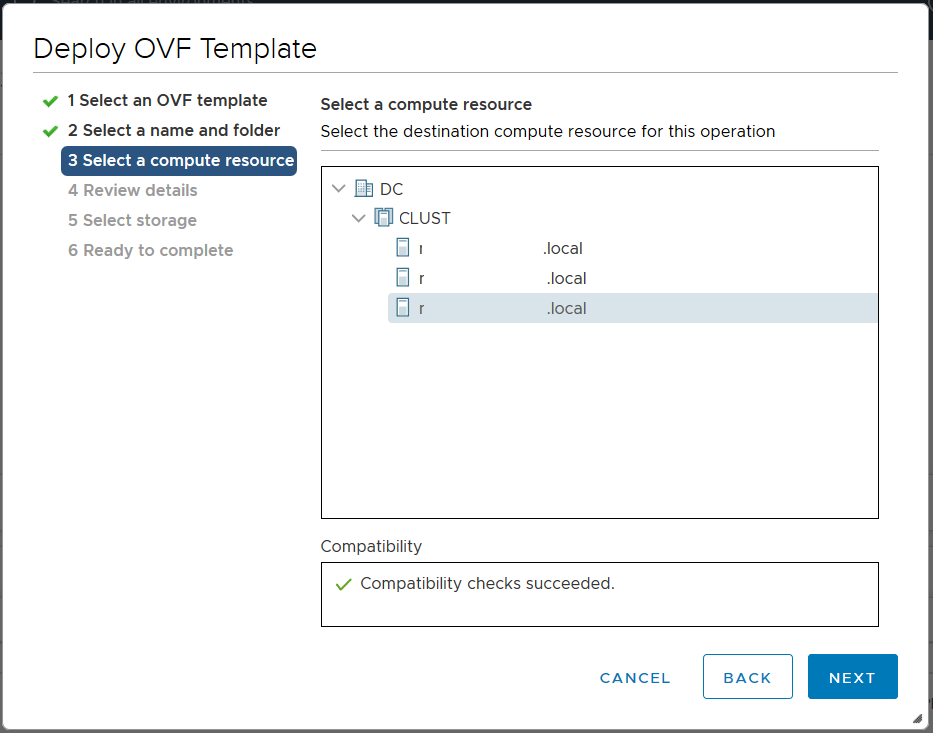
Based on earlier discussion and the size of the environment choose the configuration size.
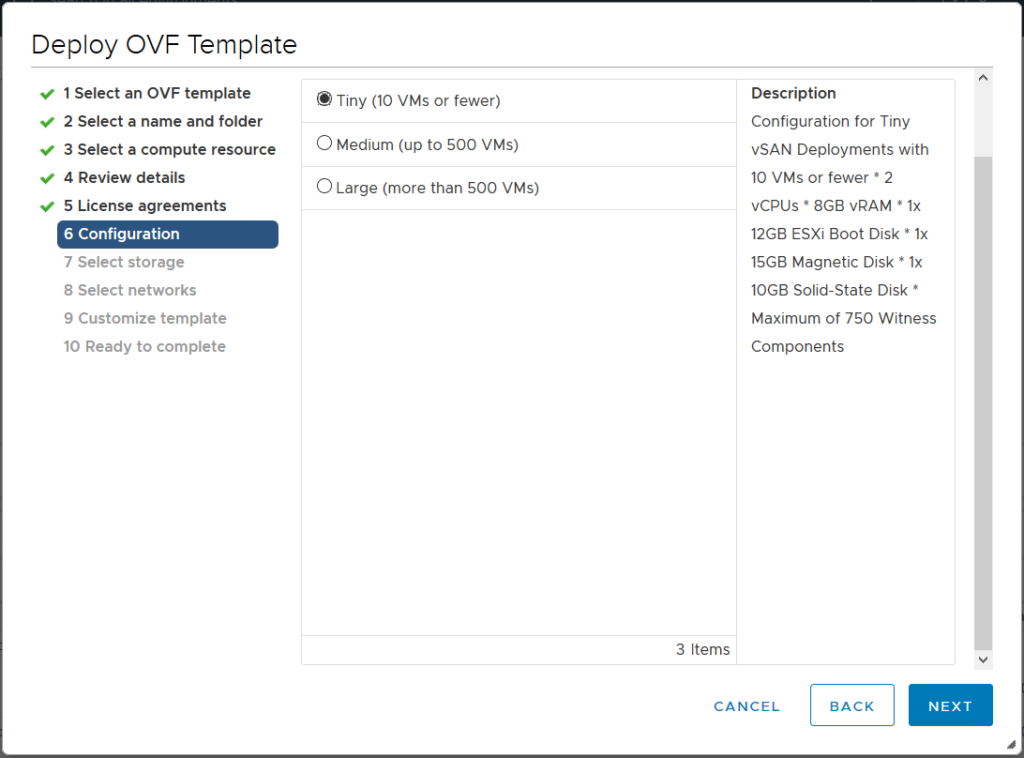
On next page choose the target datastore for witness appliance deployment.
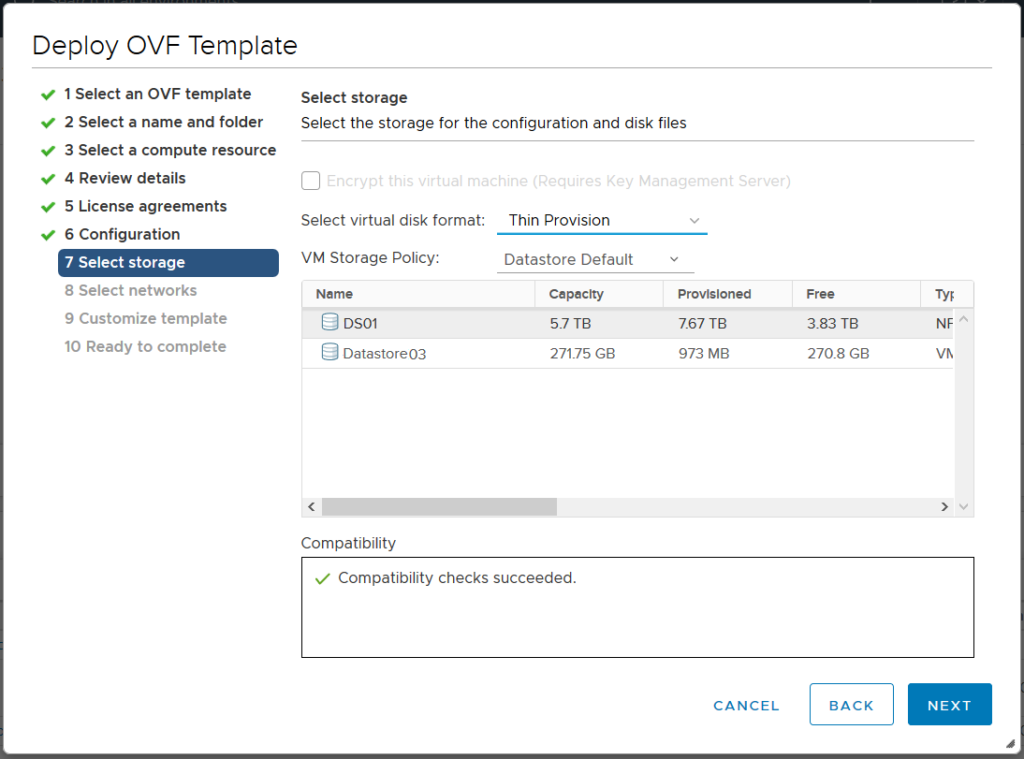
Regarding networking, the vSAN witness appliance needs two types of connectivity which are Management and vSAN. There are two port groups created with required VLAN tags on ESXi host and on this page, each of them is selected.
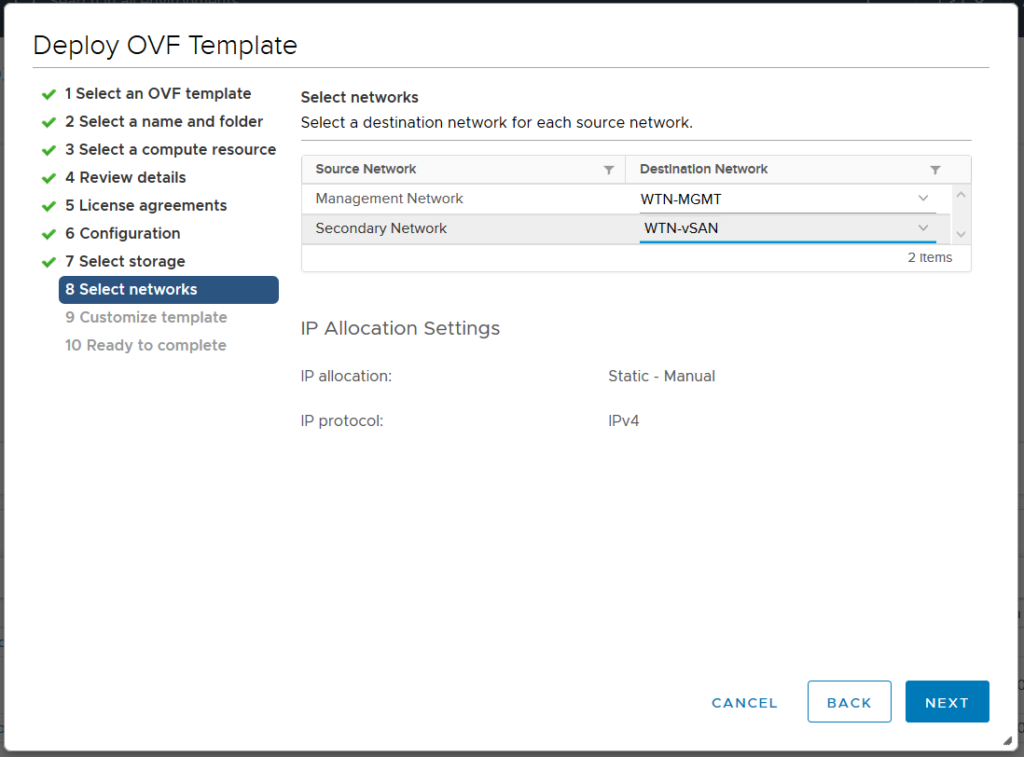
On the next page configure witness appliance Root password, vSAN traffic network, and IP configuration for Management and vSAN network.
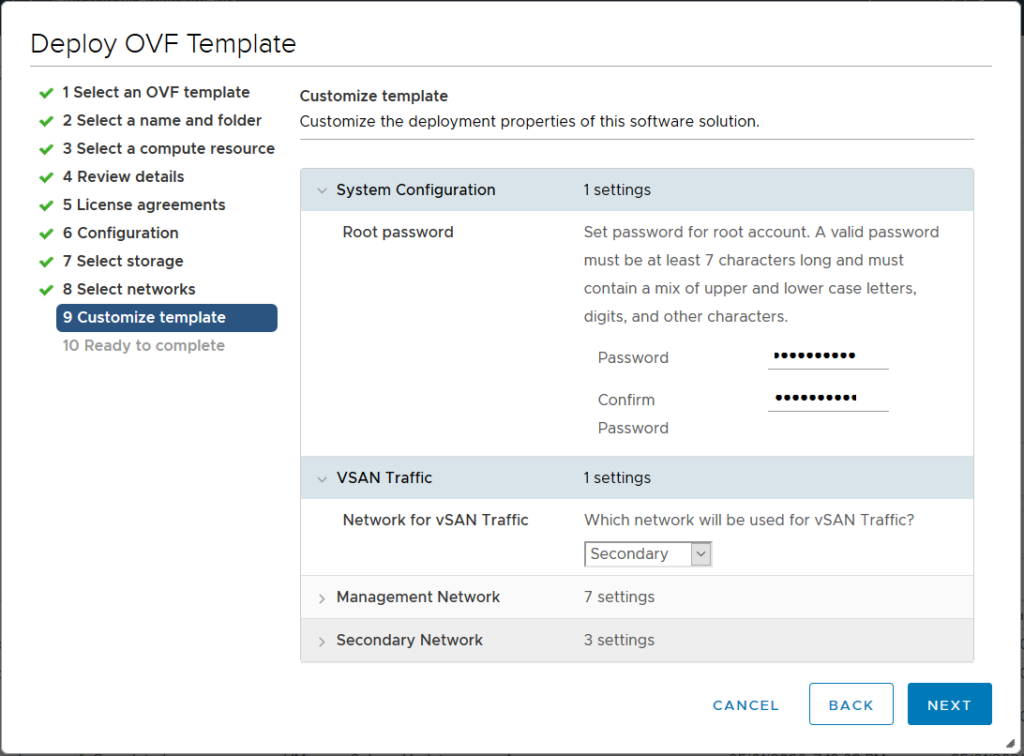
Finally, review the configuration and click finish.
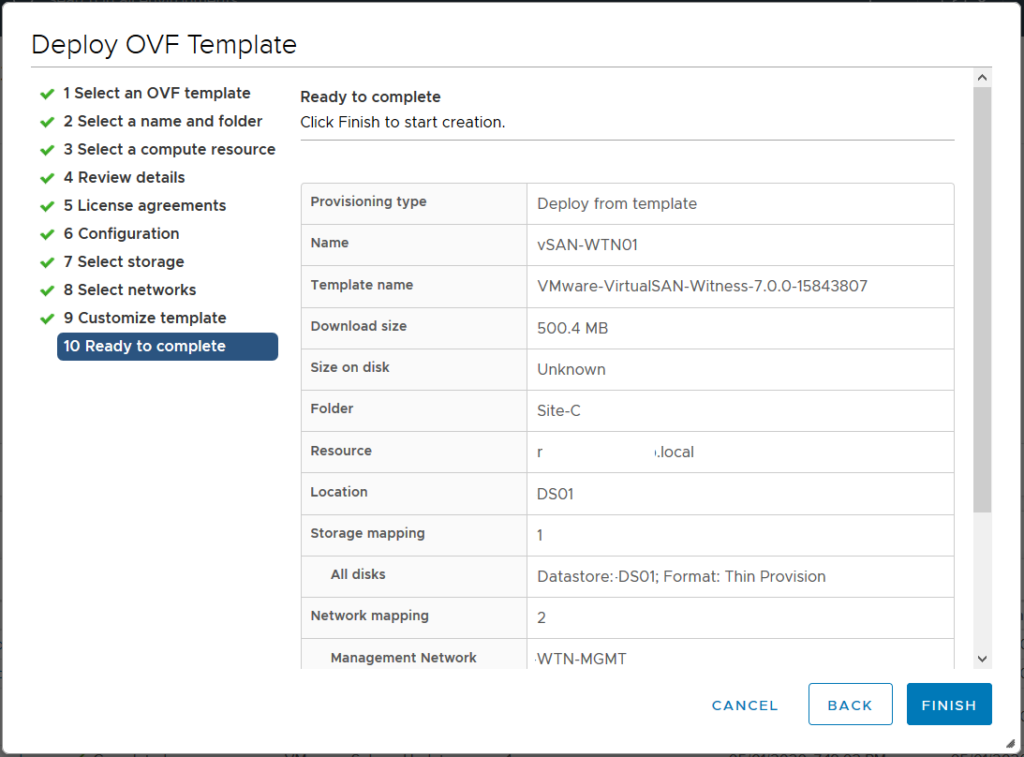
After finishing deployment of OVF Template, go ahead and turn on the appliance. You need to wait and upon successful boot of witness appliance, you can add it to respective in designated vSAN environment.
If you want to build a vSAN Stretched Cluster, you can also continue reading my other post about Configure vSAN Stretched Cluester.